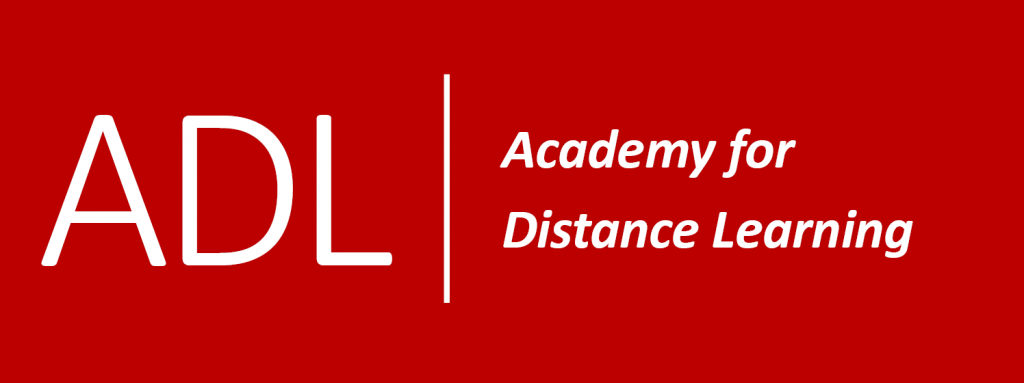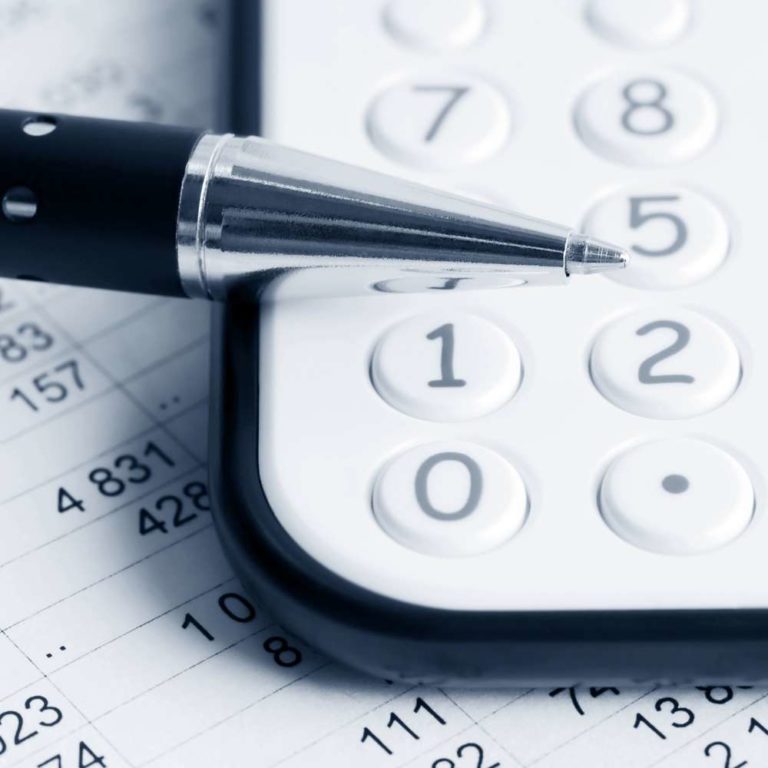Call us: +44 (0)1227 789 649 - Monday to Friday 9am to 5pm
Bookkeeping Foundations (Bookkeeping I)
Bookkeeping Foundations (Bookkeeping I) – 100 Hours Certificate Course
Contact us
PayPal Pay Later
Pay in 3 interest-free payments
-
Choose PayPal at checkout to pay later with Pay in 3.
-
Complete your purchase with the first payment today.
-
Remaining payments are taken automatically.
Pay in 3 is a form of credit, so carefully consider whether the purchase is affordable and how you will make the repayments. Be aware of the possible impact of using Pay in 3 and of missing payments, including making other borrowing more difficult or more expensive. Pay in 3 eligibility is subject to status and approval. 18+ UK residents only. Available for purchases of £30 to £2,000. Terms and conditions apply. PayPal Pay in 3 is a trading name of PayPal (Europe) S.à r.l. et Cie, S.C.A. 22-24 Boulevard Royal L-2449, Luxembourg.
Learn About Bookkeeping Foundations (Bookkeeping I)
Expand Your Bookkeeping Business Skills.
Learn the accounting practices needed to understand the monetary wellbeing of your business. Improve your existing skills or simply use the course to improve your admin or accounting abilities.
Bookkeeping Foundations (Bookkeeping I) is an ideal course for anyone wanting to have a better understanding of the principles of bookkeeping or simply to expand their work bookkeeping experience.
This is a thorough foundation course leading to improving your bookkeeping skills and will help you to:
- Re-join the workplace
- Help understand the financial health of your business
- Improve your efficiency in managing or owning your own business.
- Learn new bookkeeping skills that will help you in keeping up to date and expanding your current skills and knowledge.
- Enhancing your capability in your work practices in administration, accounts departments or management.
- Bettering your CV – shows evidence of further studies and demonstrates additional skills that you can bring to the work environment.
This course is regularly revised and updated (at least yearly) to retain its universal status.
Internationally valid – most countries incorporate standardised bookkeeping principles and practices; this course is based on international standards that are current today.
Please Note: If you reside in the UK you should request the UK version of this course.
For those who reside outside of the UK, please request the International version.
Course Information
Other Categories
Lessons
There are 13 lessons:
1. Introduction – Nature, Scope and Function of Bookkeeping
- What is bookkeeping
- Difference between accountants and bookkeepers
- History of bookkeeping
- Bookkeeping Terminology
- Understanding language
- Why do we need bookkeeping
- Bookkeeping as a management tool
- Business structures
- Business structures vary internationally
- Financial information
- Accounting conventions and doctrines
- Accounting standards
- Australian accounting standards
- UK accounting standards
- International cooperation on standards
2. The Balance Sheet
- What is a balance sheet
- Assets and liabilities
- Components of a balance sheet
- What items do not appear on the balance sheet
- Example of a Balance Sheet
- Tracking business performance
- T format balance sheet
- Balance sheet allocations
- What is working capital
3. Analysing and Designing Accounting Systems
- What is an accounting system
- Understanding the flow of information in bookkeeping
- Other business documents -statements, order forms, quotations
- Steps in the bookkeeping process
- Designing the System
- Analyzing business needs
- Designing the accounting system
- Designing the chart of accounts
- Writing a chart of accounts
- Designing the type of journals needed
4. The Double Entry Recording Process
- Ledgers
- Opening up the general ledger
- Ledger accounts/ sub ledger
- The general ledger
- Entries resulting from transactions
- Recording transactions
- Different types of accounts
- A trial balance
- Ledger accounts and double entry bookkeeping
- Recording entries
- Rules to follow
- Analysis chart
- Footing ledger accounts
- Balancing ledger accounts
- The trial balance
- Accounting for drawings
- Revision of definitions and processes
5. The Cash Receipts and Cash Payments Journal
- Recording cash transactions in journals
- Multi column receipts journal
- Cash payments journal
- Multi column cash payment journal
- What discounts are allowed
- Accounting discounts allowed and received
6. The Credit Fees and Purchases Journal
- Credit sales and credit purchases
- Credit sales journal
- Debtors subsidiary journal and control account
- Using a debtors schedule
- The credit purchases journal
- Creating a creditors Subsidiary Ledger and schedule
- The cash payments journal and creditors control account
7. The General Journal
- Recording non standard transactions
- Designing the general journal
- Posting to a general journal
- General journal entries and ledgers
- Anomalies
- Recording credit purchases of non current assets
- Recording owners contributions or withdrawals
- Recording debts that are written off
- Recording contra entries
- Recording purchase returns
- Other uses for a journal
8. Closing the Ledger
- Closing at the end of the accounting period
- Preparing for the new accounting period
- Transferring balance day closing entries
- Profit and loss account
- Determining gross profit
- Simple profit and loss account
- Balance sheet
- Businesses making a loss rather than profit
- Owner withdrawing revenue
- The end results
9. The Profit and Loss Statement
- Introduction
- The balance sheet and how it relates to Profit and Loss Statement
- Using net profit figure to evaluate business performance
- What is profitability?
- Gross Profit
- Net Profit
- Cash flow margin
- Return on assets margin
- Gearing ratio and how it relates to cash flow
- Return on owners equity margin
- Informative profit and loss presentation
- Segmentation
- Functional classification- Grouping expenses
- Showing extraordinary expenses and revenue
- Accounting for unused materials or stock
- Why do we need to calculate the cost of materials used
10. Depreciation on Non-current Assets
- Intangible assets
- Depreciation methods
- Depreciation calculation methods
- Calculating depreciation with the straight line method
- What if there is no residual value
- How to enter depreciation into the books
- Declining balance method of depreciation
- Calculating percentage rate of depreciation
- Production units method of depreciation
- What about intangible assets
- Keeping track of assets and depreciation
- Asset register
- End of Useful life for assets
- Loss disposal of asset account
11. Profit Determination and Balance Day Adjustments
- Cash and accrual accounting
- Cash accounting
- Accruals accounting
- Balance day adjustments to final accounts
- How to record prepaid expenses
- Showing in the general ledger
- What about if we actually owe unpaid expenses on balance day
- Receiving income in advance
- Other balance day adjustments –stock, bad debts, depreciation, discounts
- A more comprehensive treatment of trial balance
- Partnerships
- Companies
- Clubs and non profit organisations
- Using a ten column worksheet or spreadsheet
12. Cash Control: Bank Reconciliation and Petty Cash
- Ways of handling money
- Outgoing monies (payments)
- Methods of controlling cash
- Recording cash transactions
- The cash book
- Bank transactions and the cash book
- Bank reconciliation statements
- The cash cycle –cash flow and liquidity
- Account receivable turnover ratio
- Operating cash flow ratio
- Inventory turnover ratio
- Professional journals
13. Cash Control: Budgeting
- Introduction
- Budget types
- The cash budget
- Factoring in safety margins
- Variable costs
- Budget reviews
- Taxes and budgets
- GST or VAT taxes
- Tax input credits
- Taxable supplies
Please note: Each lesson culminates in an assignment, marked by your tutor and returned with feedback, and extra reading if required.
Learning Goals
- Outline the uses of financial information; accounting standards and conventions and the basic functions of bookkeeping for service businesses.
- Describe the use of balance sheets and their function.
- Outline setting procedures for a bookkeeping system; steps in its use; the flow of information and use of other business documents.
- Formulate procedures for the setting up of a double entry bookkeeping system
- Outline the functions and specific uses of ‘special journals’.
- Outline methods used to set up credit sales journal and credit purchases journals
- Outline the setting up procedures for a general journal and its use
- Describe methods used to close ledger accounts at the end of an accounting period.
- Describe profit and loss statement preparation methods.
- Outline the use of appropriate methods for the depreciation of non-current assets.
- Outline the fundamentals of cash and accrual accounting; the ‘matching process’; the necessity for balance day adjustments.
- Describe the cash cycle; the importance of cash control and its various methods including petty cash systems and bank reconciliation processes.
- Outline the role of budgets and their importance to business.
Practical (Set Tasks)
- Explain the term bad debt. Use the general journal to record a bad debt. Understand ‘cents in the dollar’ offer in relation to a bad debt. Write off bad debts. Prepare a general journal. Record entries to a general journal. Know how the general journal is used in preparing closing entries. Set up a general journal. Close off a general journal.
- Explain the term and use of ‘Contra Entries’
- Record non-current assets in a purchases journal
- Know the difference between closing and balancing a general ledger account.
- Identify which ledgers are closed off at the end of the accounting period.
- Describe a profit and loss account and how to work out a net profit or a net loss. Know which account does the net profit or loss is transferred to.
- Describe a profit and loss statement and how it relates to the balance sheet.
- Know why functional classification and segmentation used on profit and loss reports
- Describe extraordinary expenses and how they are listed on the profit and loss statement and why.
- Describe ‘Materials on Hand’ calculate materials on hand. State how they are reported on the profit and loss statement. Prepare a profit and loss statement.
- Describe the difference between cash accounting and accrual accounting.
- Describe Balance Day Adjustments and their importance to bookkeeping.
- Describe pre-paid expenses and outline the difference between the asset and expense approaches to the recording of prepaid expenses.
Describe the importance of reversing entries and when they are done. - Know a range of common balance day adjustments.
- Prepare a Trail Balance for a business that carries stock and has balance day adjustments. Create general journal for adjusting entries; Post the entries to the relevant general ledger accounts. Close off the accounts to profit and loss.
- Prepare a new trial balance; Prepare the profit and loss statement; Prepare the balance sheet.
Enter reversing entries for the new accounting period. - Outline the usefulness of a 10 column worksheet.
- Make entries into a cash book and present a reconciliation statement.
- Draw up and use a petty cash book.
- Describe bank reconciliation statements and their use.
- Describe methods of cash control; describe liquidity and its link to cash flow.
- Describe accounts receivable turnover ratio; operating cash flows ratio; Inventory turnover ratio.
- Outline the importance of budgets to a business; describe a range of budgets.
- Describe the term ‘safety margin’.
- Describe the term ‘cash budget’ and outline how debtors and creditors are included.
- Describe a range of variances in a budget.
- Describe the importance of budget reviews.
Examinations
Program Summary
More Information
TRADING BUSINESSES AND ACCOUNTING RULES
Did You Know?
Accounting conventions (accounting standards) and doctrines (principles) influence accounting and (therefore bookkeeping) practices. If you understand accounting conventions (i.e. the basic rules and principles) you it will give a greater and clearer understanding of why statements are prepared in a certain way.
Accounting standards were commonly accepted accounting practices many of which have now become laws which accountants must follow.
Due to international cooperation (spanning decades of work) accounting standards i.e. the rules which govern the ways in which books are kept and reports are presented, have become standardised (i.e. can be easily recognised through similarities in approach and presentation) throughout many countries.
What are These Conventions?
There are many conventions (rules) which cover a range of situations using accepted accounting methods (conventions). The most important used by bookkeepers include the following:
The Historical Cost Convention
As with all basic accounting this rule deals with what has happened in the past (within a business). It is possibly the most commonly used accounting convention.
Transactions for assets within the business must be recorded at their original cost i.e. the amount paid at the time of purchase less depreciation (if applicable). With some exceptions, for example land which commonly (but not always) appreciates with time, the value of an asset cannot increase – i.e. Inflation or the amount an item could potentially be sold for, are not taken into account.
This can have the effect of distorting the true value of a business on the balance sheet – for example a business may buy a warehouse for £150,000. 10 years later the business owner may have an offer of £300,000 for the same building. On the balance sheet however, it still has to appear at its original cost. This is because values are nebulous i.e. you can’t really predict the future value of anything, and it is deemed a better approach to record historical value then it would be to guess at a market value.
Assets however can from time to time be re-valued to reflect their current worth and appear on the balance sheet with the new value (noted on the balance sheet).
The Business entity convention
This separates the business owner (of any type of business entities) from the business, in accounting terms. So any transactions within the business, relate to the business and not to the owner (e.g. when a business owner invests money into the business, it is recorded as a liability that the business has to the owner.
If the owner buys withdraw cash (or takes home goods) it is not recorded as a business expense. The owner can’t use the purchase of goods (for private use) as a business expense. This rule ensures that the personal and the business dealings of the owners are always separated.
The Going Concern Convention
This assumes that the business will continue its activities indefinitely and are therefore able to meet its current and future commitments. Because of this assumption, a business can classify assets and also liabilities as short, medium or long term and report them as such on the balance sheet; this prevents the write-off as costs of long-term assets, within one accounting period, instead of over many years.
This convention also allows assets to appear at book value (at purchase) rather than market value.
The Accounting Period Convention
In order to compare past to present business performance we need to produce accounting reports for a business at meaningful intervals. The length of an accounting period may be a week, a month, a quarter, or a full year, but must not be any longer due to taxation requirements.
It may be set to start and end on a certain date for example the 1st of July each year and end on the 30th of June each year – known as the ‘financial year’. Note: in some countries ‘financial years’ differ.
A business’s profit and loss account should show the expenses or the income relating to the period in which they were incurred or generated rather than when an account was paid, or income was received.
This system is sometimes also referred to as the accruals concept (see the definition given earlier this lesson. The net profit a business makes is therefore more realistic to a given period of time. Accruals are part of the bookkeeping process.
Monetary Entity Convention
This states that the monetary unit that is used is relevant to the country the business is operating in. In other words, in the USA it is the US dollar, in the UK the pound, and in Australia is the Aust. Dollar, and so on.
Recognition of Law
Financial reporting in a business is accountable by law. Books must be kept correctly reports must be accurate and correctly reflect the financial transactions of a business.
Accounting Doctrines
Accounting is based on accounting conventions – some of which we just covered in the previous pages. Following are some generally used accounting doctrines. They differ from conventions in that they do not have to be adopted – but most companies choose to do so.
Consistency
This states that the way accounting information is presented (for a business) must remain the same for all accounting periods from the present and into the future. This ensures that performance comparisons are valid and equitable and there is less likelihood that financial information is manipulated or biased towards the user.
Relevance
All business transactions within the books and financial reports of a business must be relevant to that business only.
Materiality
All items that are of importance to a business (in a financial sense) must appear in a business’s financial reports. Conversely this means that small items that are of little significance to financial outcomes may be omitted.
The way to test the importance of an item is to decide whether or not its omission with affect the reporting outcome and influence the reader’s or user’s perception of the true financial standing of a business.
The omission of cents for example in a financial report would have negligible effect on ascertaining the true financial standing of a business.
Verifiability Convention
A business (or anyone auditing the business) should always be able to confirm its figures. Any person should be able to look at the figures and use the data to come to the same conclusions.
In order to do this a business needs to produce evidence of its business transactions in the form of receipts, invoices, bank statements, EFT receipts and payments and cheque butts i.e. any documentation that was used to record transactions in the books.
Assessment
Assessment is based on a combination of completing all assignments and sitting for a final short one and a half hour exam, in your own location.
If you don’t cope well with exams then you may elect to undertake a project instead. This is a popular option.
In addition, most modules have a Set Task at the end of each lesson placed before the assignment. This is an opportunity to undertake practical work to help you acquire knowledge and skills and practical experience. This ADL feature is an added bonus not found at most online schools. Set Tasks are not required for assessment.
Some courses also have optional Self-Tests which are available on our online learning platform. These are not available by correspondence or by USB, and do not form part of your overall grade.
How our courses work
- Choose Your Learning Method
You choose how you would like to receive your course material, i.e., Online, USB or Correspondence. The choice is yours. You may also work on online or offline. - Tutor Allocation
Every student is assigned their own dedicated tutor who is an expert in their subject area. They provide as much or as little individual contact as you require. You can contact your tutor whenever you need – your hours are not limited. - Feedback and Assignments
Tutor Feedback is an essential component in helping you understand the subject matter. Tutor feedback is given in the form of notes written on the assignment. We encourage you to contact your Tutor where help with clarification and understanding of course material may be required.
Your assignments are located at the end of each lesson. You submit them for marking whenever you are ready. There is no time limit. - Set Tasks and Self-Tests
Most modules have a Set Task at the end of each lesson before for the assignment. This is where you get the opportunity to undertake practical work to help you acquire knowledge, skills and practical experience. Many modules also have short Self-Tests. - Exams
Once all assignments have been completed you may then elect to sit for a one and half hour exam in your own location. If you prefer not to take the exam you do have the option to undertake a project instead.
Once the exam or project part of the course is completed, your Certificate is then processed. Please allow approximately 4 weeks for this. - Design Your Own Qualification
ADL offers students the flexibility to self-design their own qualification – bundling together a combination of 100-hour modules into a qualification higher than a certificate.
FAQ
FREQUENTLY ASKED QUESTIONS
Here is a list of the most often asked FAQ’s.
General
Q. Why should I enrol with the Academy for Distance Learning?
A. Here at ADL, our students are our priority – we treat everyone as a unique individual.
Q. Do I need to buy text books?
A. No, as each module has been written by highly qualified industry professionals. The content of the material is presented in such a way that text books are not required. However, if you require additional reading your tutor will be able to supply a list.
Q. What happens if I have to stop studying for a while? (eg. become sick, go on holidays, have a baby, move house, etc)
A. It’s OK to take a break and start up your study at a later point in time. Just let us know.
Q. Is there an age limit?
A. There is no maximum age limit. We do however, have a minimum age limit of 18 years. Below that age parental consent would be required.
Q. Are your courses up-to date?
A. Our courses are revised and updated on a rotation system.
Q. Do you have a Cancellation policy?
A. Yes. We have a cancellation policy that is fair and equitable. For further details please click here.
Q. Will I have any opportunity to engage with other students?
A. We have a Student Community group based on facebook! If you don’t have a facebook account already, you could make one just for talking with fellow students on the group.
Enrolment
Q. When can I enrol/start?
A. You may enrol and start at any time of the year – it’s all self- paced.
Q. Can I study from anywhere in the world?
A. Our courses are available to anyone, anywhere in the world from the comfort of your own home. The course content is relevant to any country, culture or economy.
Q. How long do I have to complete the course?
A. You complete the course at any time that is convenient for you.
Q. Completing a 100 hour module – how long will it take?
A. For some students a 100 hour module will take approximately to 3- 6 months to complete. Others take less time and some even longer.
Assessment
Q. Assessment – how does it work?
A. For each 100 hour module you are assessed by assignments (at the end of each lesson) and a final one and a half hour exam (or you may elect to complete a Project, instead of sitting the exam) – the choice is yours – you sit for the exam in your own location.
Q. I don’t cope well with exams – what can I do?
A. You may elect to undertake a Project (set by your tutor) instead of sitting the exam. Projects are completed from your home and can usually take a couple of weeks to complete.
Q. If my assignment is not up to standard is there an opportunity to resubmit my work?
A. Yes –
Q. How many assignments do I need to complete for each module?
A. At the end of each lesson, there is an assignment – so if a course has say, 10 lessons, there would be 10 assignments.
Q. I am having difficulty attending workshops/industry meetings, what can be done?
A. If your course requires attendance at workshops, conferences, or industry meetings; alternative arrangements can be made in your country.
Qualifications
Q. What qualification will I receive?
A. For individual modules, you would be awarded a Certificate endorsed by TQUK (Training Qualifications, UK), providing you complete all assignments and the exam. If you just want to complete only the assignments and not sit for the exam or finish a Project, then a Letter of Achievement would be awarded. For more details on qualifications available please click here.
Q. Can I customize my diploma/higher qualification?
A. Not all educational institution’s certificates /diplomas meet everyone’s needs. The opportunity to Design Your Own Diploma at the Academy (subject to our approval) is an added bonus, not found at other colleges. You choose modules that you think will help you in achieving your goal.
Q. What do I get when I complete the course? Will I receive a transcript?
A. At the completion of all courses and providing all assignments and exam requirements have been met, you will receive your Award and a Transcript.
Tutors
Q. Our tutors – who are they?
A. We appoint Tutors and require that they must be currently active in their industry, with at least 5 years’ experience in their chosen profession.
Q. Can I contact my tutor at any time?
A. Yes – you have unlimited access to your tutor via email through our Online Classroom. You can always leave a message with ADL requesting your tutor to contact you. You decide on how much or how little contact you wish to have.
Q. Practical work – How is this done?
A. To find out more about this part of the course please visit the section on How Our Courses Work here.
Career Options
What's Included
What your tuition fees include
- All Course Material via Online, USB or Correspondence
- Assignments Marked
- Professional Tutor Feedback
- Set Tasks - Practical Exercises to help you develop skills
- Self-Tests – multiple choice questions at the end of lessons in most modules
- Unlimited Personal Tutor Support – via our student classroom
- Committed and Friendly Admin Support – vital to your success
- All ADL Exam or Project fees (exception RHS exams)
- Qualification Certificate
- Official Transcript with assignment grades
- Student Manual
Plus FREE
- Academic Writing course (optional - 10 hours only)
- Critical Thinking course (optional - 10 hours only)
- Job Seekers Careers Guide
- Study Tips on How To Study Better
- Career Counselling by ADL Staff
- CV Writing Help, Tips and Advice
There are no hidden extras
Career Opportunities
FAQ - RHS Theory Qualifications
GENERAL
If you require further details about any of the RHS industry recognised qualifications please, call one of our friendly RHS Course Advisors on +44 (0)1227 789 649 or email: [email protected]
Q: When can I Enrol/Start My RHS Course With ADL?
A: Anytime, Anywhere. There are no enrolment deadlines.
Q: I live Overseas. Can I Study From Overseas?
A: You can study any of the RHS theory qualifications overseas. All courses are offered in English. You will need to email RHS Qualifications direct to arrange sitting for your examination overseas.
Q: Is There a Time Limit for Completing an RHS Qualification?
A: At present there are no time limits. However, RHS is contemplating in the future, the introduction of course time-lines.
Q: Are There Any Entry Requirements (Pre-Requisites)?
A: The RHS Theory courses do not require prerequisites, previous experience or any knowledge of horticulture. You just need passion for all things horticulture.
Q: What Course Should I Start With First? I Am New To RHS Qualifications.
A: We highly recommend that you start with Level 2 – Principles of Garden Planning, Establishment and Maintenance.
Q: What Does ADL Course Material Include?
A: Includes Power Point Presentations, Videos and written course lessons.
RHS EXAMS
Q: When Do Exams Take Place?
A: Exams are held on fixed dates in February and June of each year. You should register as a candidate at least 3 months before these dates, so please do not leave exam registration to the last minute
Q: Where Do I Take My Exams?
A: UK: You take the exams at the RHS Wisley Centre, located between Cobham and Ripley in Surrey or at other authorised RHS centres around the UK.
Overseas: please email RHS qualifications direct for centre information.
Q: Exam Pass Marks?
A: Module – pass 50%. Commendation 70%.
Qualification: 50% pass for all modules.
Commendation awarded for all modules.
Each question carries a value of 10 marks.
Q: I’m Not Happy With My Exam Results?
A: You have the opportunity to re-sit your exam at the next opportunity.
There are no restrictions on the number of re-sits you can take. The highest mark you achieve will remain.,












